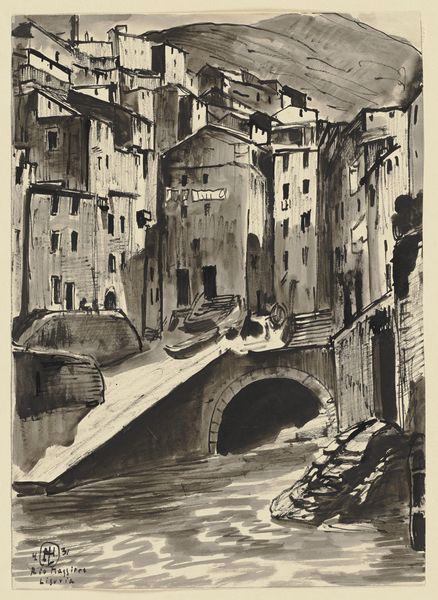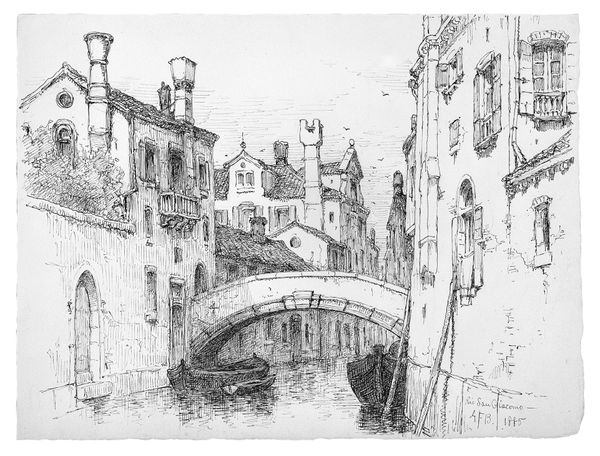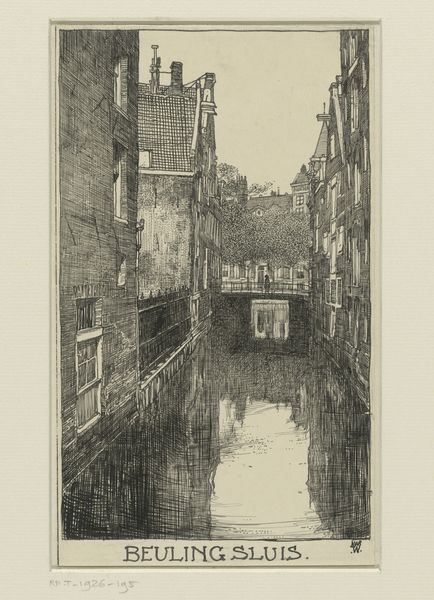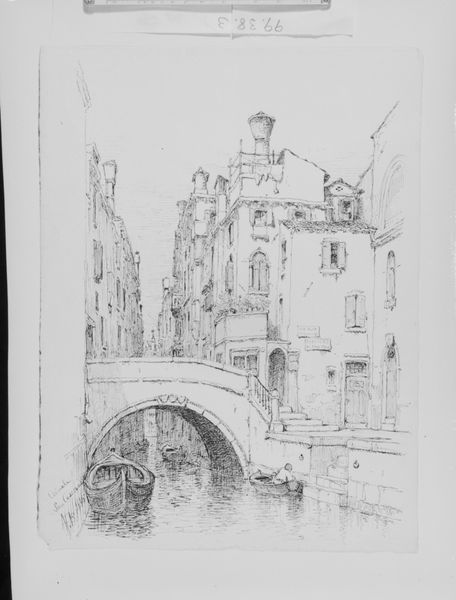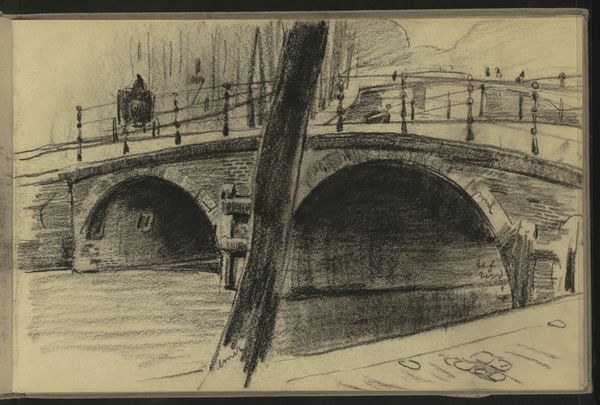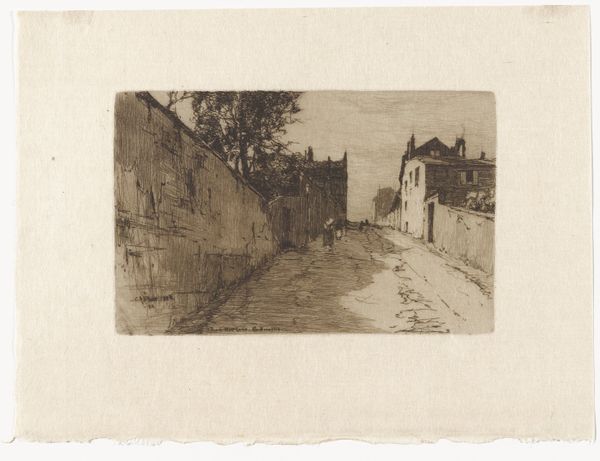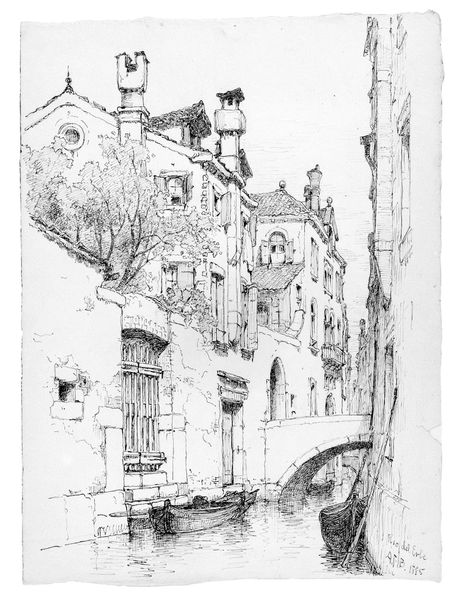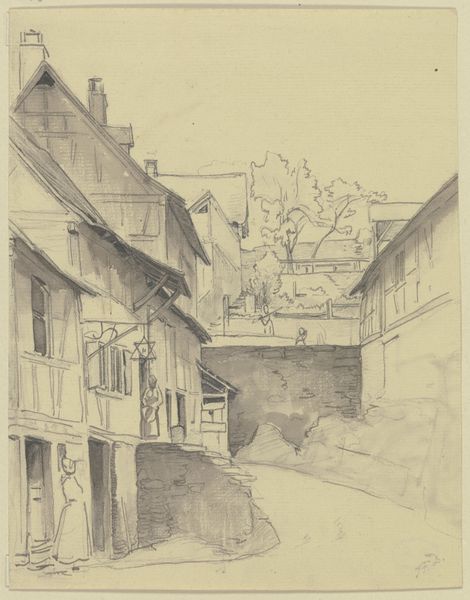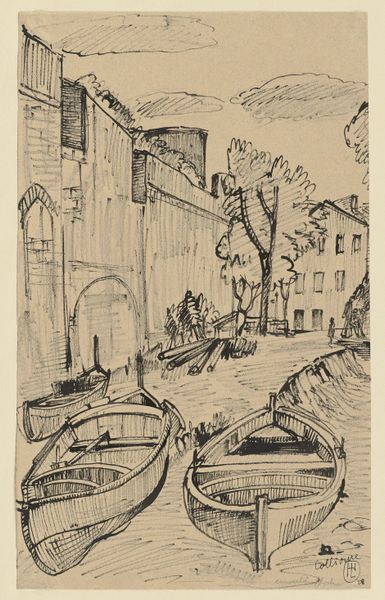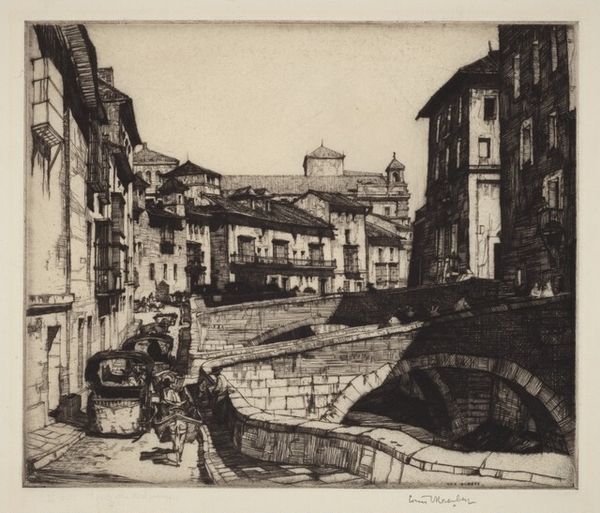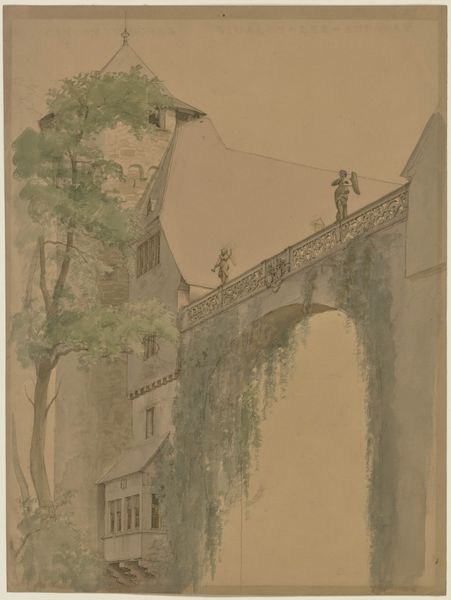
drawing, paper, ink, indian-ink
#
17_20th-century
#
drawing
#
amateur sketch
#
aged paper
#
toned paper
#
quirky sketch
#
sketch book
#
landscape
#
paper
#
personal sketchbook
#
ink
#
german
#
indian-ink
#
pen-ink sketch
#
expressionism
#
sketchbook drawing
#
cityscape
#
watercolour illustration
#
sketchbook art
Copyright: Public Domain
Curator: This is Hermann Lismann's "Collioure" from 1928, rendered in ink on paper. It possesses this wonderful quality of being both immediate and timeless. Editor: Yes, it’s just a sketch, but there's a haunting quality about it. It almost looks abandoned, as though no one lives in that town anymore. What do you see in this piece that gives it so much gravity? Curator: Consider the historical moment. This work was created amidst the rise of nationalism in Europe. Could the somewhat stark depiction be interpreted as a reflection of a societal unease or a critique of bourgeois comfort? Lismann, as a German artist, would have been keenly aware of the shifting political landscapes. What if this town isn't simply abandoned, but emptied—forcibly displaced? Does that alter your perspective? Editor: Absolutely. I was focusing on the purely aesthetic, but viewing it through a political lens reveals another layer. The contrast between the dark inks and bare walls suddenly reads as oppressive rather than simply... atmospheric. Curator: And how does the medium – ink, a relatively accessible and portable medium – contribute to your understanding? Could this choice speak to the artist’s own positionality, perhaps a desire to document or bear witness without the weight of grand artistic gestures? Editor: That's fascinating! It’s easy to overlook the simplicity of ink and paper. Now that I’m thinking about it, the work feels less like a formal artistic statement and more like direct record of place, a witness account. Curator: Exactly. Art isn't created in a vacuum, is it? What at first glance appears to be a simple sketch, reveals deeper engagements with society once you tease it out with theory. Editor: It’s a little unsettling how much history can be packed into one unassuming cityscape. I am seeing much more, thanks to that alternate viewpoint! Curator: And that's the power of looking beyond the surface and connecting the work to broader narratives. Now we both will never see a simple sketch the same way.
Comments
No comments
Be the first to comment and join the conversation on the ultimate creative platform.
